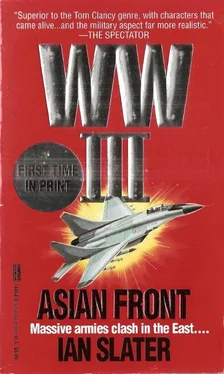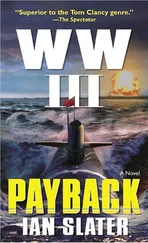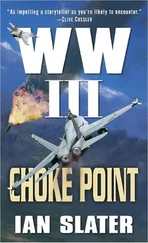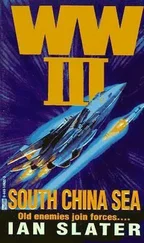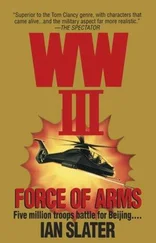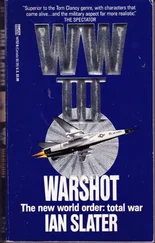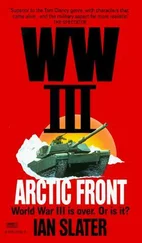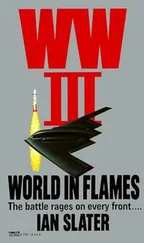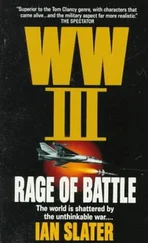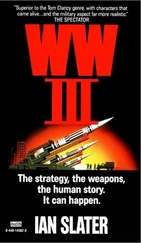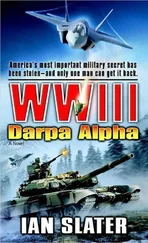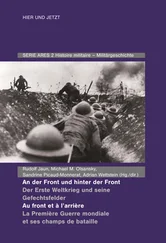To say Lieutenant Brady’s discovery shocked her would be an understatement. When other naval intelligence officers arrived aboard the ship from Bangor, they found her ashen-faced. The ammunition used was quickly ascertained to be depleted-uranium-tipped 7.62mm of the kind used by Spets.
At first the theory was that Spets aboard some other merchantman had somehow taken over one of the four trawlers and, once aboard the Southern Star, had been the ones to radio in the sighting of a submarine — in order to lure the Americans into the mine field, thus inciting a massive panic attack amid the navy brass and precipitating an equally massive lack of confidence in the navy throughout the country. Pressure mines, the CNO informed the president, would not have shown up on the sub-chasing Orion’s magnetic anomaly detector, as the mines were often manufactured of nonmagnetic plastic composite.
The supposition that the Spets had sent out the message to lure the Allied ships made sense, but then questions were asked about where they had come from in the first place. Satellite pictures showed no other surface vessel within a hundred miles of the Southern Star. Had there been a sub as the Southern Star first reported? A sub carrying Spets commandos?
All the theories fell apart, however, when the four trawlers were found between a 110- and 130-mile radius from the Southern Star’s last position. Furthermore, none of the four trawlers had seen any other vessels — the other common agreement among the four skippers being that they had been unable to contact Southern Star after midnight.
With the certainty of ice turning blood cold, the truth began to sink in, and the director of naval intelligence, along with the CNO, knew he would have to inform the president without delay.
The DNI, his gold rings catching the velvety firelight in the deceptively calm atmosphere of the president’s Mount Weather lounge, gave the president the bad news that contrary to first suspicions, the Spets had certainly not come from a submarine. The undersea sound-detection network was working fine — both U.S. and Canadian ships out of Bangor and Esquimalt respectively having run PROSIGs — prop signature recognition tests — in the hours following the Southern Star incident. And to show that everything had been working properly, it was pointed out that the shore SOSUS stations had plotted the Canadian and U.S. warships’ exact positions and given detailed computer visual recognition of the ships and their armaments within twenty seconds of first noise pickup.
A sub would likewise have been picked up by SOSUS with the same ease. Even if a sub had been hiding near a hot spot, using the sound of thermal vents to mask it, once the sub made any move to attack or release mines, SOSUS would have picked it up.
“If there were no subs in the area,” the president asked, “then where the hell did the Spets come from?”
“Mr. President,” the DNI replied, “they were already there.” He paused. “Aboard the Southern Star. Sleepers. Southern Star laid the mines. It’s difficult for the layman,” the DNI began, stopped short by a warning glance from the CNO.
“I’m sorry, sir,” the DNI corrected himself. “I mean for nonnavy personnel to realize, but a ship that size, fifteen thousand tons, while not a big vessel in navy terms, is plenty big enough to hide a couple of automobiles without anyone noticing — if the parts are brought aboard piece by piece. Pressure mines would be a cinch. ChiCom agents among the crew could have been stashing them aboard for months, even years, waiting to be dumped in the event of war. So far,” the DNI continued, “we’ve listed thirty crewmen not accounted for. All Chinese names. Out of San Francisco. But in all honesty we’d have to search the vessel for days to be absolutely certain. There are so many nooks and crannies a body might have been dumped in.”
“They would have killed the crew — before dumping the mines,” Mayne proffered.
“That’s what it looks like, Mr. President. What puzzled us for a while is how they got away, but we think we have the answer for that one now. The factory ship’s helicopter is gone, so it’s pretty clear they escaped to shore, flying low, taking advantage of wave clutter to avoid our radar.”
“But could thirty men — I mean against two hundred?”
“Mr. President, it would have taken only ten commandos from the Guo An Bu — Chinese Intelligence — or anywhere else against unarmed men. They used grenades as well.”
For Mayne this was the last straw. The attack on Hillsboro’s cesium clock, the sabotage against the huge electric grid, the water poisoning in New York and other cities — and now his entire West Coast sealift — shipping having to be rerouted, losing days, possibly weeks, in reaching Freeman. He and his cabinet decided he had no alternative but to extend and widen the Emergency Powers Act: curfews and empowering the police to arrest on there suspicion, and suspension of Mirandizing suspects. He turned to Trainor, whose gaze during the crisis seemed morbidly attracted to the flickering of the fireplace.
“Trainor — cancel all my appointments in the morning.”
“Wha— Ah, yes, Mr. President,” Trainor answered, embarrassed at being caught daydreaming, his attention having momentarily been drawn to the crumbling symbolism of logs collapsing in the fire.
Suddenly there was a bang. The door flew open, the two Secret Service men already either side of Mayne, one of them his Uzi drawn, the other knocking the president to the floor, crouching protectively over him. “Everyone down!”
Somebody in the marine corps detachment guarding Mount Weather had goofed and inadvertently thrown a couple of cypress logs in the stack of firewood, a knot in the wood having exploded.
“Enough!” the president said. “Damn it!”
Taiwan
In his home port of Kaohsiung on Taiwan’s far southwest coast, Admiral Kuang was waiting. He had been waiting for twenty years, and another few weeks here or there didn’t matter if his dream of personally leading an invasion across the straits came true, after which he would personally go to Hangchow — which Marco Polo believed to be the most beautiful place on earth — and there cross the West Lake to raze Mao’s hallowed villa to the ground.
But Kuang knew that in Taipei the War Council would not release him until they saw the American Freeman was fully committed to an attack from the north. Kuang knew his lieutenant had promised the American general his full support when the time came, but it was a half truth — a promise based on the assumption that Freeman would lead off and so draw the bulk of Cheng’s army northward away from the Straits of Taiwan.
But now Kuang’s agents had told the admiral about the ChiComs’ sabotage via the Southern Star on the American west coast, which would seriously delay resupply for Freeman. Kuang was anxious. It involved his word as an officer to help Freeman. He had, as the Americans would say, stuck his neck out, knowing that only if Taipei was willing to move could he. Had the admiral known, however, the full measure of the growing pressure against Freeman by Cheng’s northern buildup in Manchuria, he would have relaxed. For Freeman, in the face of Cheng’s buildup, would have to do something, and quickly, or be crushed by the Manchurian colossus. Still Freeman, in view of the sabotage on the United States, particularly that on the West Coast delaying his sealift, might be tempted to hold back. Kuang sent an encoded signal to Freeman’s HQ that, decoded, read simply “mercury.”
Freeman could move or not, but Kuang’s message would tell him the ROC navy was ready to invade the beaches of Fukien, and thus take pressure off Freeman. After Freeman read the message there were tears in his eyes. He pulled out a tissue and blew his nose hard. “Damn dust in this hut! Doesn’t anybody clean it?”
Читать дальше
